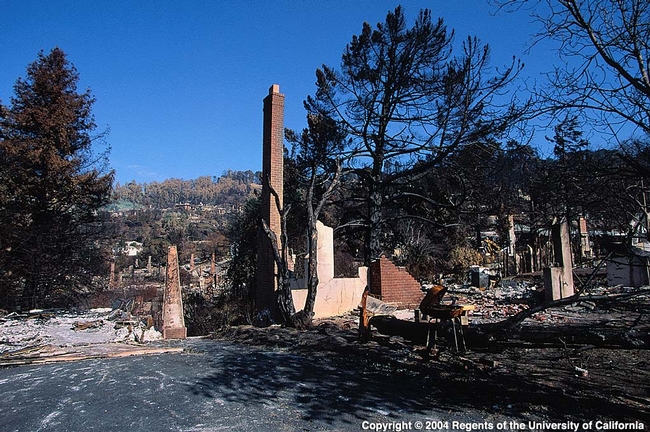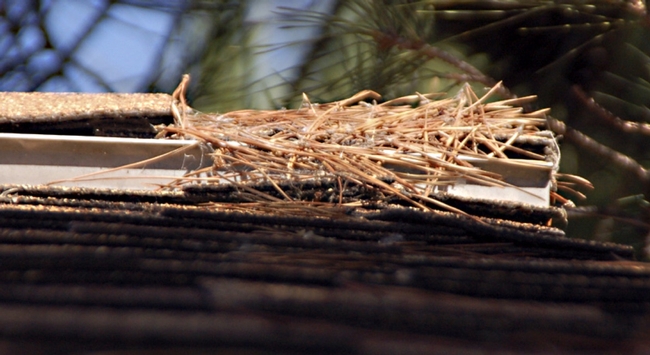Reposted from UCANR News
Preventing embers from getting inside may save homes
Photos and video of the Northern California communities that have been hit by wildfires this week show buildings reduced to ash. How could so many homes and businesses burn so quickly in Wine Country fires? Many houses that burned to the ground in the Northern California fires likely burned from the inside out, says Yana Valachovic, UC Cooperative Extension forest advisor for Humboldt and Del Norte counties.
Red hot embers carried on the wind can enter the attic via the venting. “In the case of the wind-driven fires on October 8, these fires created ember storms that blasted little coals into everything in their pathway,” Valachovic said. These embers also create small spot fires near the home that fuel new sources of embers.
Weather played a large role in these fires and generated a fire storm of embers that ignited grass, shrubs, trees and anything in its path. “While the landscape can be the fuse, the homes really can be the most burnable part of the landscape,” Valachovic said. “These embers likely lodged in the small spaces and openings of homes and buildings. A common location is for the embers to enter via attic venting or HVAC systems distributing little fires into the buildings.
“Embers also landed on receptive leaves, outside furniture, and other flammable materials outside the buildings that created fires adjacent to the buildings. Once enough buildings were engulfed in fire, the radiant heat of each building fire led to exposures on the neighboring buildings, creating a house-to-house burn environment.”
Residents can reduce the risk of embers setting their house on fire by removing dry plants around the structure.
“These fires remind us that everyone in California could help the fire situation by managing the vegetation, leaves in the gutters and decks, newspaper piles, brooms and other flammable sources near to their houses now before they get the evacuation call,” Valachovic said. “If you are likely to have to evacuate soon, temporarily covering or sealing up the vents with metal tape or plywood can help harden your home to an ember storm.”
Steve Quarles, UC Cooperative Extension advisor emeritus, who spent his career studying fire behavior on building materials and around homes, created an online Homeowner's Wildfire Mitigation Guide at http://ucanr.edu/sites/Wildfire. Quarles, who now does research for the Insurance Institute for Business and Home Safety, demonstrates how embers can ignite and quickly engulf a house in flames in a video https://www.youtube.com/watch?v=IvbNOPSYyss. After the 3-minute mark, video shows embers drifting up and flying through a screened vent into the house, where they could ignite combustible materials in the attic resulting in fire starting on the inside of the home.
“If you have time to prepare your home, use the wildfire last-minute check list at http://disastersafety.org/wp-content/uploads/2016/07/IBHS-Wildfire-Last-Minute-Checklist.pdf,” Valachovic said.
Valachovic has co-authored publications in home survival in wildfire prone areas http://anrcatalog.ucanr.edu/pdf/8393.pdf and how landscape plants near homes can create more vulnerability to wildfire http://anrcatalog.ucanr.edu/pdf/8228.pdf.
Once these fires are extinguished, a more detailed analysis will be possible.
“Past wildfire events have shown that this is the common way homes in the wildland urban interface (WUI) burn, and this scenario was likely translated to the urban environment,” she said.

